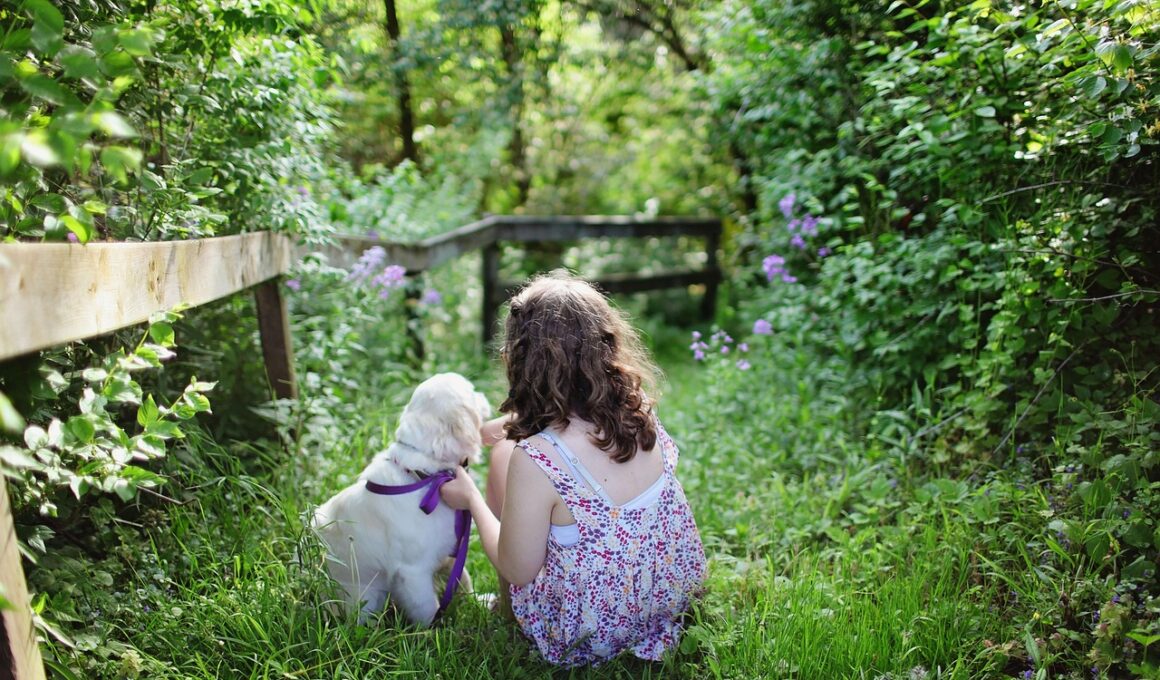Behavioral Modification Strategies for Persistent Fence Jumpers
Jumping fences or barriers can pose a significant challenge for dog owners. It often leads to escaping from home environments and can compromise the safety of the pet. Understanding why dogs jump fences is vital for developing effective behavioral modification strategies. Many dogs jump due to boredom, anxiety, or lack of exercise. Addressing the root causes can significantly reduce the likelihood of fence jumping. Regular exercise and socialization can help alleviate some of the impulsive behaviors. Establishing a consistent routine with mental stimulation, such as puzzle toys or obedience training, is beneficial. Additionally, using positive reinforcement when your dog remains calm within boundaries could help solidify good behavior. Training should include rewarding your dog for staying within the yard. Positive reinforcement encourages the desired behavior by associating the action with treats or praise. It’s also fundamental to assess your fencing situation. Ensure your barriers are high enough and secure to discourage jumping. Installing covers or extensions on existing fences may further prevent escape attempts. For persistent offenders, consulting a professional dog trainer may be warranted for tailored strategies to manage this behavior effectively.
Understanding the Why Behind Jumping
To efficiently address fence jumping, one must understand the underlying motivations behind this behavior. Dogs often jump fences because they are seeking something outside, such as other animals or simply the desire to explore. Boredom can also drive them to escape. It is essential to ascertain the reasons behind your dog’s persistence in jumping. Observing your dog’s triggers is a critical first step. Are they jumping because they see something interesting? They may not be adequately stimulated mentally or physically. Some dogs may jump due to separation anxiety if they feel lonely when left alone. This behavior can escalate if not addressed promptly. Increasing daily exercise routines may necessitate longer walks or play sessions. Engaging activities like fetch or agility training can keep your dog entertained and tired. Moreover, providing them with toys that challenge their intellect can help curb their need to escape. You may also consider establishing areas in your yard where they can safely play without risking jumping. Incorporating some dog-friendly structures, such as tunnels or climbing equipment, could satisfy their exploratory needs, keeping them entertained and reducing the urge to jump.
Another essential aspect in addressing the problem of jumping involves creating a secure environment. Assess the physical barriers within your yard and upgrade them as necessary. A solid recommendation is to erect taller fences or install privacy fencing to minimize distractions from the outside. Dogs may jump when they see interesting external stimuli. If your fence is already tall, consider using extensions or planting tall hedges nearby to block views. Additionally, burying chicken wire along the base of the fence can deter digging attempts, which some dogs resort to as a means of escaping. To truly empower your dog to remain safe and engaged, consider fostering a multi-layer approach with various elements. Block areas that provide strategic jumping stands, like trash bins or furniture, with some deterrents. Utilize plant barriers for a natural touch while maintaining visual appeal. Place appropriate distractions in your yard such as toys or even a dog house, to provide a haven for your dog to enjoy without feeling the need to escape. A well-secured environment enhances your dog’s overall comfort and peace of mind, making it less likely they will feel compelled to jump.
Utilizing Positive Reinforcement
Positive reinforcement is an incredibly effective method for modifying behavior in dogs, particularly when addressing jumping issues. Begin by rewarding your dog when it maintains its position within the yard. Whenever your dog remains calm and does not show interest in jumping the fence, offer treats or praise. This association between good behavior and positive outcomes is instrumental in helping your dog learn the boundaries of acceptable behavior. Gradually increase the time they must stay within the yard before receiving a reward to enhance retention of the behavior. Additionally, redirect their attention by teaching them commands or tricks that reinforce staying put, such as “stay” or “place.” By channeling their energy back into your training sessions, you can keep them focused and engaged during these moments. Consistency is crucial; ensure all family members are applying similar reward practices for uniform messaging. Encourage your dog with excitement and enthusiasm, making training sessions enjoyable. Ultimately, this method can build your dog’s confidence and reduce anxiety associated with staying within boundaries. As a direct result, your dog starts understanding that staying inside is far more rewarding than jumping or escaping.
Another critical aspect that complements positive reinforcement is establishing structured routines. Consistency in your dog’s daily life contributes significantly to a sense of security, reducing anxiety and the compulsion to jump fences. Create a schedule that includes set feeding times and regular play sessions. This structured environment will help your dog feel secure, knowing what to anticipate throughout the day. Implementing structured walking experiences lets your dog expend excess energy that might otherwise trigger jumping behaviors. Try to include socialization opportunities, such as visits to dog parks or playdates with other dogs. This prevents boredom and young dogs especially benefit from understanding social boundaries with their peers. You can also make adjustments to afternoon activity routines, ensuring that your dog has ample opportunity for mental stimulation and exercise. Teaching your dog new tricks or reinforcing existing commands keeps their minds stimulated. A well-balanced routine filled with positive experiences fosters a dog less inclined to escape or jump. Creating such structured environments not only lowers behavior concerns with jumping but enhances the dog’s overall well-being and happiness.
Seeking Professional Help
If all the previous strategies appear ineffective, it may be time to consider enlisting the help of a professional dog trainer or behaviorist. Expert assistance can provide you and your dog with personalized guidance tailored to your specific situation. These professionals can effectively assess the environment and your dog’s behavior comprehensively. Many trainers specialize in behavioral modification strategies, including resolving jumping issues. They can design a training plan utilizing evidence-based methods, evaluating both the dog’s and owner’s behaviors. Group classes can also help improve training, as dogs respond well to peers, increasing their excitement and focus on the task at hand. Behaviorists may work on addressing any anxiety issues that lead to jumping. They may suggest behavioral adjustments, alternative strategies, or even relaxation techniques to alleviate stress and fear. Collaborating with a professional will offer additional support, making the challenge less daunting, while ensuring your dog learns essential confinement skills. Remember that persistence is key; modifying behavior takes time and patience. Engaging with experienced trainers may significantly boost your chances of changing your dog’s jumping habits effectively.
Conclusively, managing persistent fence jumpers is a multifaceted approach that ensures a safer environment for your dog as well as a better understanding of their needs. Each dog is unique, and addressing the factors contributing to their jumping behavior is vital. By utilizing behavioral strategies such as positive reinforcement, structured routines, environmental security, and even professional guidance when necessary, a stronger bond can be formed between you and your canine companion. This connection is fostered through mutual understanding while ensuring that they remain comfortably within boundaries. Tackle boredom and anxiety by providing ample mental and physical stimulation, thus potentially diminishing any urges to escape. With time, effort, and dedication, behaviors can be transformed effectively. Dogs can learn to feel secure in their surroundings, creating a peaceful home environment for everyone involved. Remember, the journey to modifying behavior requires patience but is undoubtedly worthwhile. As both owner and pet thrive, enjoy the freedom from worry about escaping or jumping. Begin today to implement these strategies and watch your dog flourish in a safe and secure home setting!


